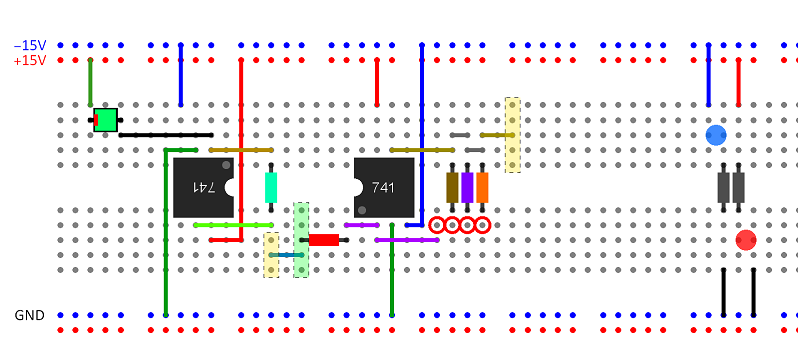Page i (Appendix)
Please go to update pages for the latest modification, class-wise issues, and others if links for those pages exist.
update page a update page b update page c
Please adopt and practice good breadboard wiring habit. It will save you time and headache in the long run. Cutting corner might save you 5, 10 minutes, but risks wrong, unstable wiring that will lead to hours of time waste because of nonsensical results, erroneous measurements, and even more effort to debug and fix the circuit later, not to mention the frustration.
From what I observed, some in the class are doing fantastic job with beautiful and quality circuits, but some others really need to do better. If you feel you need help, below is an app for Lab IV circuit wiring. But don't just follow it mindlessly to get it over and done with. You should learn the principle behind the approach so that you will do well in the next few labs, and above all, the final.
From now on, you will take a picture of your circuit and paste into your Lab Notebook. The TA will take into consideration of the quality of your circuit as well. So, don't have wires, resistors, chips,.. crossing over each other like superhighway junctions.

notice this:
1- any element can be removed, replaced without disturbing anything else in the circuit.
2- all wires, elements can be mechanically secured and sturdy (pushed flushed and deep into the contact holes).
3- little or no risk of accidental coupling (touching) between wires and elements.
4- easy for others to understand and help you to debug (for example, LED power indicators can tell a helper quickly that there is power in your circuit, one doesn't have to trace where the wires go, whether they are plugged in to the power supply etc. - some tested the circuits while there was no power and wondered why)
This is OK and good for traffic, but not for electronic circuits.

